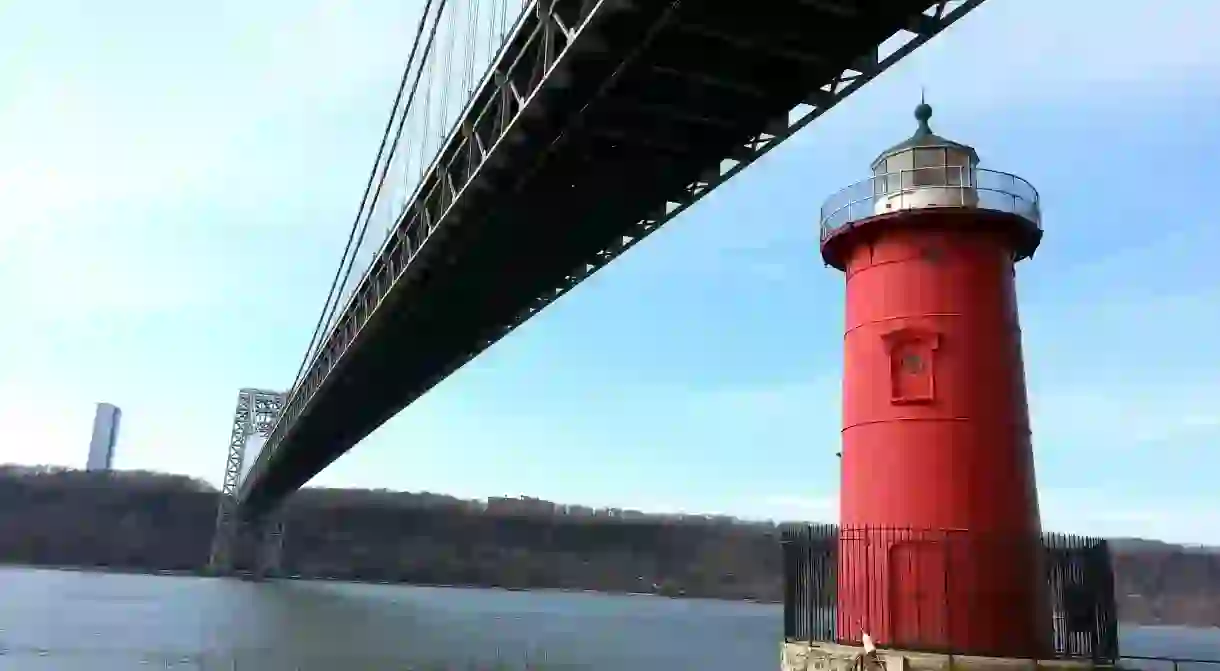This Architectural Boat Tour Will Help You See NYC With Fresh Eyes

Forget walking or bus tours. Whether you’re a long-time New Yorker or a curious newcomer, the best way to see the city’s architecture is most certainly by boat.

Many people forget that New York City is an archipelago, connected by a complex series of bridges and tunnels, making it the perfect place to sightsee by the sea. Classic Harbor Line offers architectural tours around Manhattan, where you can sip champagne, nibble small bites, and learn about the ever-evolving skyline with guides from the New York chapter of the American Institute of Architects (AIANY). Five tours are offered: Lower Manhattan Architecture; Around Manhattan Architecture; Bridge, Architecture & Infrastructure; Around Manhattan Historic Architecture; and Industrial Waterfront Tour to Freshkills Park. Each tour takes between 90 minutes and three hours.
The architecture boat tours start out on the Hudson River, on boats with a large glass interior enclosure specifically designed to view the city’s buildings. On one particularly cloudless Tuesday, John Kriskiewicz – an architecture historian at Parsons School of Design and AIA guide—is heading a three-hour excursion around Manhattan. “I’m a land lover. Any maritime questions, you have to ask the captain,” Kriskiewicz quips as the boat departs Chelsea Piers, offering a 360-degree view of Midtown.

Rather than spout trivia or quirky historical titbits, Kriskiewicz points out New York City’s spectacular architectural changes, the new developments and shifting landscapes, and even the bad decisions of bygone eras. “When you’re on the boat, it’s total immersion. People really remember the stories because they can see and relate, and it’s not just an abstract thought,” he tells Culture Trip.
“You can go to a slide lecture, but after a while all the slides start to look the same, because you’re physically in the same environment. Here, the light is always changing, the mood of the city is always changing, depending on the weather. You can see how things flow. Plus, being on a boat is just relaxing.”

Kriskiewicz describes the city’s skyline as an “economic graphic,” a barometer that reveals the stability (or instability) of the urban landscape, at any given point in history. The skyline isn’t just a spectacle on the world’s architectural stage or an imperious display of wealth and ambition; it’s a calculated force with fascinating historical context embedded in each architectural detail.
“People are entitled to like or dislike buildings, but I want them to come away with an understanding of why the building looks the way it does and why the city looks the way it does,” Kriskiewicz says.

There’s a diverse audience on the boat tours: a mix of urban planners, architects, engineers who are taking the tour for educational credit, as well as long-time New Yorkers who have no qualms about speaking up about a questionable fact or tidbit. “But we also have visitors who just want to know ‘Is that Manhattan? Is that New Jersey?’ And you want them to feel comfortable, too,” Kriskiewicz continues. “We’re trying to find the right balance between an educational product and a purely entertainment product.”
As the boat curves along on the narrowest section of the East River, revealing some of the lesser-known buildings and bridges that make up Upper Manhattan’s skyline, Kriskiewicz highlights Robert Moses’s imperial influence on the cityscape (“for better or worse”), including the West Side Highway and Triborough Bridge. There’s also insight into the imposing concrete housing projects from the 1970s, new construction in the South Bronx, and a glimpse of the Inwood’s rustic, northern edge. Even for seasoned city dwellers, the verdant, picturesque scene at the top of the island is surprising—it’s as if you’re somewhere upstate, not circling Manhattan.
“The lament that New Yorkers have today is so often ‘It’s not the city I grew up in.’ But it’s never the city you grew up in, whether it was 1850 or 1950,” he explains after the tour.
“We often get so stuck in our own time period and our own lives, but I want people to take away how the city is always evolving.”

For more information on Classic Harbor Lines’ architectural tours or to buy tickets, check out their website here.













